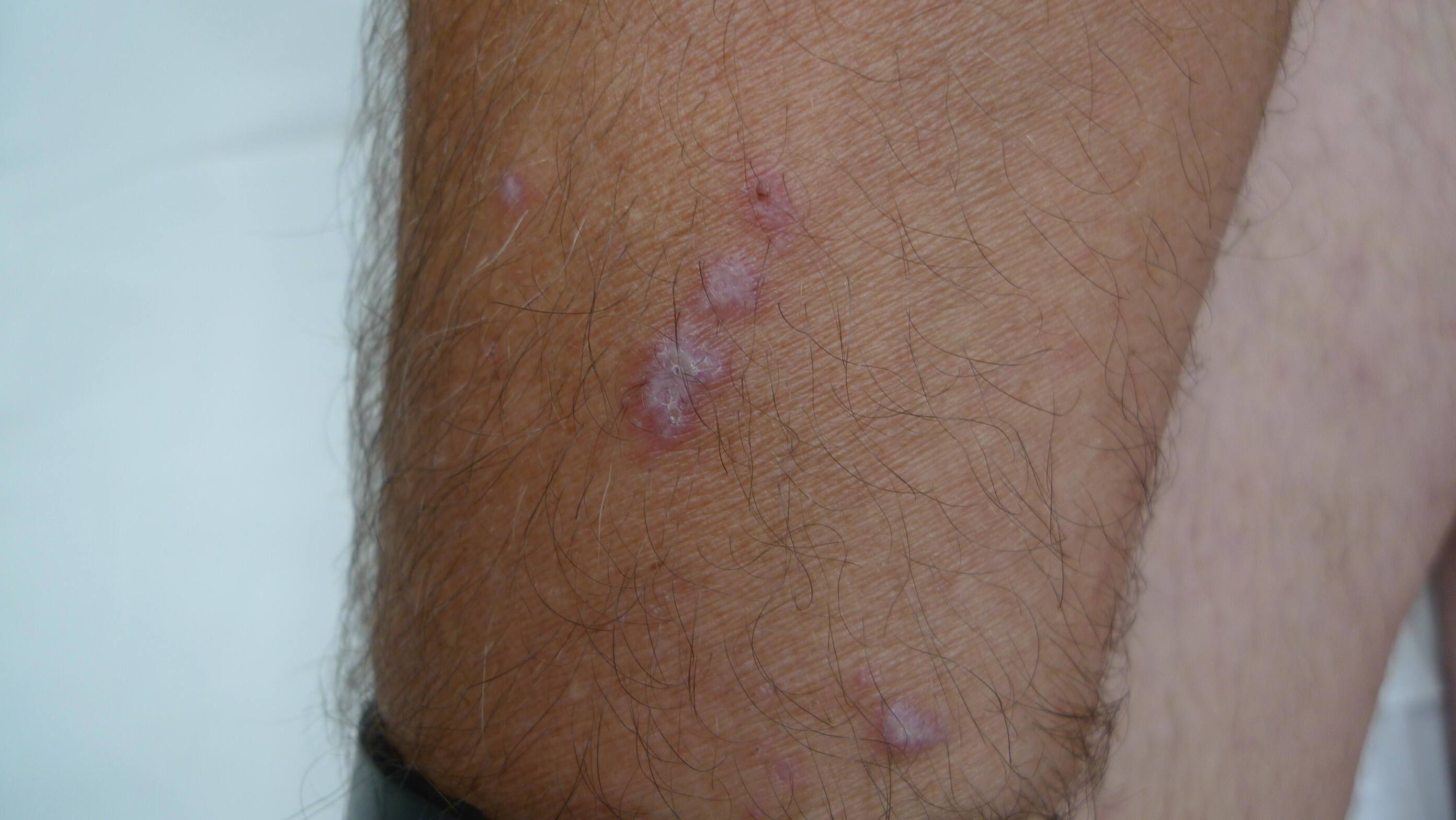
Lichen Planus might sound like a mysterious term, but it's actually a common skin condition. Characterized by itchy, flat, purple bumps, it can appear on various parts of the body, including the wrists, ankles, and even inside the mouth. While the exact cause remains unknown, it's believed to be an autoimmune disorder where the body's immune system mistakenly attacks its own tissues. This condition can affect anyone, but it's most commonly seen in middle-aged adults. Symptoms can vary from mild to severe, and while there's no cure, treatments are available to help manage the discomfort. Understanding Lichen Planus can help those affected find relief and improve their quality of life.
Key Takeaways:
- Lichen Planus is a chronic condition that affects the skin, nails, and mucous membranes. It can cause discomfort and requires medical attention, but there are various treatments available to manage the symptoms.
- Lichen Planus can be triggered by genetic, environmental, and even emotional factors. It's important to seek timely medical advice and explore lifestyle changes to manage the condition effectively.
What is Lichen Planus?
Lichen Planus is a chronic inflammatory condition affecting the skin, hair, nails, and mucous membranes. It can cause discomfort and requires medical attention. Here are some intriguing facts about this condition.
- Lichen Planus is an autoimmune disorder where the immune system mistakenly attacks the skin and mucous membranes.
- The exact cause of Lichen Planus remains unknown, but it is believed to be linked to genetic and environmental factors.
- This condition is not contagious and cannot be spread from person to person.
- Lichen Planus can affect people of all ages, but it is most commonly seen in middle-aged adults.
- Women are more likely to develop Lichen Planus than men.
Symptoms of Lichen Planus
Recognizing the symptoms of Lichen Planus can help in seeking timely medical advice. The symptoms can vary depending on the area affected.
- The most common symptom is the appearance of purplish, flat-topped bumps on the skin.
- These bumps often have a white, lacy pattern on their surface known as Wickham's striae.
- Itching is a frequent symptom, which can range from mild to severe.
- Lichen Planus can cause painful sores in the mouth, making eating and drinking difficult.
- The condition can also affect the nails, leading to thinning, ridging, and even nail loss.
Causes and Risk Factors
Understanding the potential causes and risk factors can provide insight into who might be more susceptible to Lichen Planus.
- Genetic predisposition plays a role, as it can run in families.
- Certain medications, such as those for high blood pressure and heart disease, can trigger Lichen Planus.
- Hepatitis C infection has been linked to an increased risk of developing Lichen Planus.
- Stress and anxiety may exacerbate the symptoms of Lichen Planus.
- Allergic reactions to dental materials, such as amalgam fillings, can also trigger the condition.
Diagnosis of Lichen Planus
Accurate diagnosis is crucial for effective management and treatment of Lichen Planus. Here are some methods used by healthcare professionals.
- A thorough physical examination is often the first step in diagnosing Lichen Planus.
- A biopsy, where a small sample of affected skin or mucous membrane is taken, can confirm the diagnosis.
- Blood tests may be conducted to rule out other conditions with similar symptoms.
- Direct immunofluorescence, a special staining technique, can help identify characteristic immune deposits in the skin.
- Dermoscopy, a non-invasive imaging technique, can aid in the visual assessment of skin lesions.
Treatment Options
While there is no cure for Lichen Planus, various treatments can help manage the symptoms and improve quality of life.
- Topical corticosteroids are commonly prescribed to reduce inflammation and itching.
- Oral corticosteroids may be used for more severe cases or when multiple areas are affected.
- Antihistamines can help alleviate itching and improve sleep.
- Retinoids, derived from vitamin A, can be effective in treating skin lesions.
- Phototherapy, using ultraviolet light, can help reduce symptoms in some patients.
Complications of Lichen Planus
Lichen Planus can lead to several complications if not properly managed. Awareness of these complications is important for timely intervention.
- Chronic Lichen Planus can cause permanent skin discoloration or scarring.
- Oral Lichen Planus increases the risk of developing oral cancer.
- The condition can lead to hair loss if it affects the scalp.
- Nail involvement can result in permanent nail damage or loss.
- Lichen Planus can cause emotional distress and impact mental health due to its chronic nature and visible symptoms.
Lifestyle and Home Remedies
In addition to medical treatments, certain lifestyle changes and home remedies can help manage Lichen Planus symptoms.
- Maintaining good oral hygiene can help manage oral Lichen Planus.
- Avoiding spicy, acidic, or rough foods can reduce mouth irritation.
- Stress management techniques, such as yoga and meditation, can help alleviate symptoms.
- Moisturizing the skin regularly can prevent dryness and reduce itching.
- Wearing loose-fitting clothing made of natural fibers can minimize skin irritation.
Research and Future Directions
Ongoing research aims to better understand Lichen Planus and develop more effective treatments. Here are some areas of focus.
- Studies are exploring the genetic factors that contribute to Lichen Planus.
- Researchers are investigating the role of the immune system in the development of the condition.
- New treatments, such as biologics, are being tested for their effectiveness in managing Lichen Planus.
- Clinical trials are examining the potential benefits of alternative therapies, such as acupuncture and herbal medicine.
- Advances in imaging techniques are improving the diagnosis and monitoring of Lichen Planus.
Support and Resources
Living with Lichen Planus can be challenging, but various support and resources are available to help patients and their families.
- Support groups provide a platform for sharing experiences and coping strategies.
- Online forums and social media groups offer a sense of community and support.
- Patient education materials can help individuals better understand their condition and treatment options.
- Counseling and therapy can assist in managing the emotional impact of Lichen Planus.
- Healthcare providers can offer guidance on managing symptoms and improving quality of life.
Interesting Facts About Lichen Planus
Here are some lesser-known yet fascinating facts about Lichen Planus that might surprise you.
- Lichen Planus can sometimes resolve on its own without treatment, although this is not always the case.
- The condition was first described by British dermatologist Erasmus Wilson in 1869.
- Lichen Planus can affect the genital area, causing discomfort and pain.
- The name "Lichen Planus" comes from the Greek word "leichen," meaning tree moss, and the Latin word "planus," meaning flat.
- Some people with Lichen Planus may experience a phenomenon called the Koebner response, where new lesions appear at sites of skin injury or trauma.
Final Thoughts on Lichen Planus
Lichen Planus, a chronic inflammatory condition, affects the skin, nails, hair, and mucous membranes. Understanding its symptoms, causes, and treatments can help manage this condition better. Common symptoms include itchy, purple lesions on the skin and white patches in the mouth. Though the exact cause remains unknown, it’s often linked to immune system issues. Treatments range from topical corticosteroids to light therapy and oral medications.
Living with Lichen Planus can be challenging, but with the right information and medical support, it’s manageable. Regular check-ups, a healthy lifestyle, and staying informed about new treatments can make a significant difference. If you suspect you have Lichen Planus, consult a healthcare professional for a proper diagnosis and treatment plan. Knowledge is power, and being well-informed can lead to better health outcomes.
Frequently Asked Questions
Was this page helpful?
Our commitment to delivering trustworthy and engaging content is at the heart of what we do. Each fact on our site is contributed by real users like you, bringing a wealth of diverse insights and information. To ensure the highest standards of accuracy and reliability, our dedicated editors meticulously review each submission. This process guarantees that the facts we share are not only fascinating but also credible. Trust in our commitment to quality and authenticity as you explore and learn with us.


